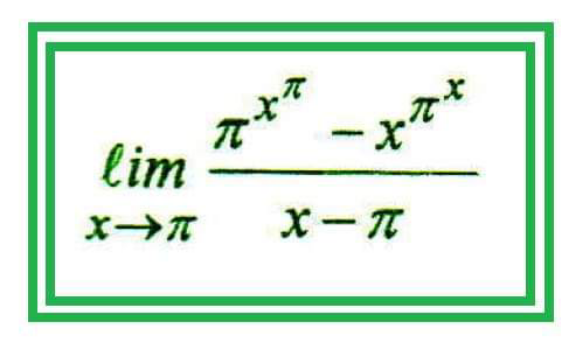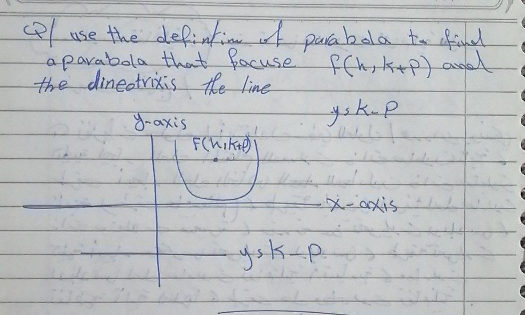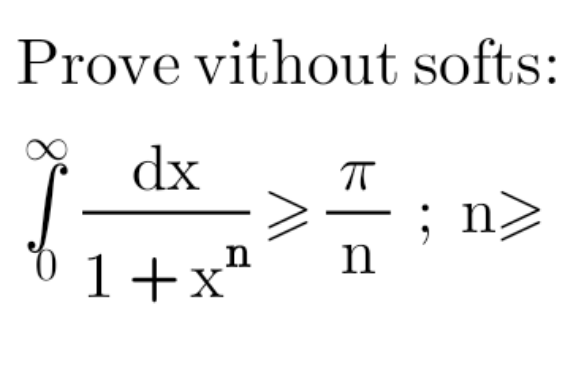
Question and Answers Forum
AllQuestion and Answers: Page 560










Pg 555 Pg 556 Pg 557 Pg 558 Pg 559 Pg 560 Pg 561 Pg 562 Pg 563 Pg 564
|
Question and Answers Forum |
AllQuestion and Answers: Page 560 |

|
| n ∈ N^∗ ; n is not a square of any integer. Show that (√n) ∉ Q . |
| ∫_0 ^(π/2) xsin(x)ln(sin(x))dx=? |
| Let ABCD be a tetrahedron, G, G' and G" the centers of gravity of faces ABC, ACD and ADB, I and J the midpoints of edges [BC] and [CD]. 1) Show that lines (IJ) and (GG' ) are parallel. 2) Prove that the points G, G' and G" are not aligned. 3) Show that the planes (GG 'G ") and (BCD) are parallel. |

|

|
| (√(4+(√(4^2 +(√(4^3 +(√(4^4 +…))))))))=? |
| if 0<x≤(π/2) then: (1/(sinx)) + (2/(πx)) ≤ (1 - (2/π))^2 + (1/x) + (2/π) |
| prove that cos 36°=((1+(√5))/4) |
| Show that ∀ n ∈ N, ⌊((√n)+(√(n+1)))^2 ⌋=4n+1 |

|
| If you want to easily write any quadratic function in vertex form, just use these formulas: f(x)=ax^2 +bx+c if a>0, then: f(x)=(x+(b/2))^2 −((b/2))^2 +c if a<0, then: f(x)=−(x−((b/2)))^2 +((b/2))^2 +c Let′s take some examples: f(x)=x^2 −6x+7 f(x)=(x−(6/2))^2 −((6/2))^2 +7 f(x)=(x−3)^2 −9+7 f(x)=(x−3)^2 −2 Now let′s take the same example, but when a<0: f(x)=−x^2 −6x+7 f(x)=−(x−(−(6/2)))^2 +((6/2))^2 +7 f(x)=−(x+3)^2 +9+7 f(x)=−(x+3)^2 +16 Another example: f(x)=x^2 +4x−5 f(x)=(x+(4/2))^2 −((4/2))^2 −5 f(x)=(x+2)^2 −4−5 f(x)=(x+2)^2 −9 Now let′s also see what happens when a<0: f(x)=−x^2 +4x−5 f(x)=−(x−((4/2)))^2 +((4/2))^2 −5 f(x)=−(x−2)^2 +4−5 f(x)=−(x−2)^2 −1 |
| q={a+((a/9)−(1/(108))−a^3 )^(1/3) }^(1/3) +{b+((b/9)−(1/(108))−b^3 )^(1/3) }^(1/3) a=((9+(√(37)))/(72)) , b=((9−(√(37)))/(72)) find q correct to 5 decimal places. |

|
| Solve for real numbers: (sin2x + 4cos^2 x + 1)(cos5x - cosx)<0 |

|
| y′′=−y |
| If xcos θ+ycos ∅+zcos ψ=0, xsin θ+ysin ∅+zsin ψ=0 and xsec θ+ysec ∅+zsec ψ=0 then prove that (x^2 +y^2 −z^2 )^2 = 4x^2 y^2 |
| (1/7)+(1/(13))+(1/(19))=a find (2/7)+(4/(13))+(6/(19))=? |
| Find: 𝛀(n) =∫_( 1) ^( n) ([x]^2 ∙{x} + [x]∙{x}^2 )dx n∈N ; [∗]-GIF ; {x}=x-[x] |
| f(x)=(1/(1+2^x ))+(1/(1+3^x ))+(1/(4^x +1)) find ∫_1 ^5 f(x)dx+∫_(−5) ^(−1) f(x)dx |

|

|
| (√(4+27(√(4+29(√(4+31(√(4+…))))))))=? |

|

|
Pg 555 Pg 556 Pg 557 Pg 558 Pg 559 Pg 560 Pg 561 Pg 562 Pg 563 Pg 564 |